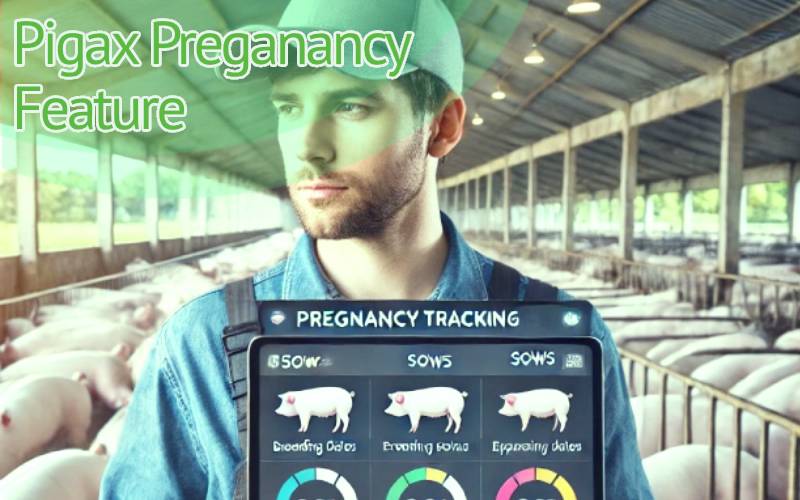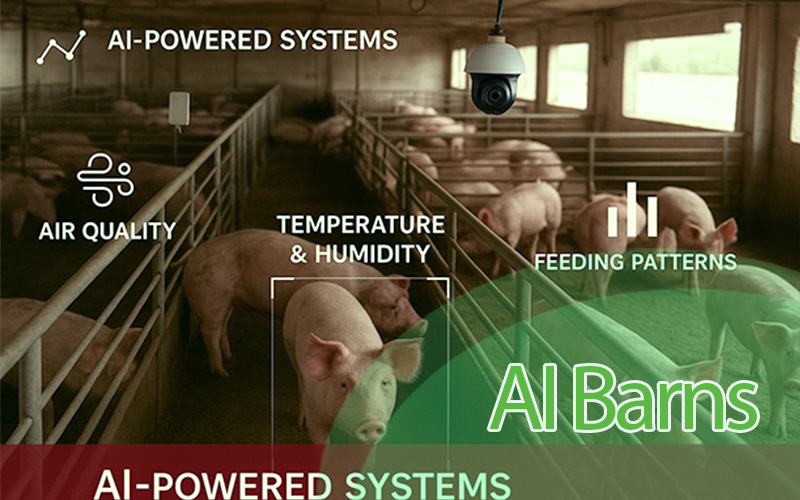Create and Maintain the Best Pig Profile for your Piggery Business
It may sound out of place to keep records of individual pigs in a pig farm since there are already several records of the overall performance of the farm. Why do we need to capture the essential details about each pig? Well, there are more benefits to maintaining an individual pig record. In this blog, we will explore some of these benefits, and the steps to create and manage an individual pig record system, starting with understanding the components of these records, identifying the major data to include, and discussing the importance of maintaining them.
What is Pig Profile
A pig profile is a comprehensive document that captures vital information about each pig on your farm. These records include a range of data points that provide insights into the health, growth, and overall status of each pig on your farm.
An individual pig record typically includes:
- Identification Details
- Birth Date and Origin
- Production cost
- Weight Records
- Nutrition logs
- Health status
- Breeding details
Major Data in a Pig profile
To effectively manage your pigs, you need to gather and record several key pieces of information. Each data point serves a specific purpose and contributes to a comprehensive understanding of your herd's status.
Identification Details: Assign a unique identifier to each pig, such as an ear tag number or a name. This ensures that you can distinguish each pig from the others, which is essential for accurate record-keeping.
Birth Date and Origin: Record the birth date of each pig and note where it was born. This information is vital for age-specific care and for tracking the pig's lineage.
Production Cost: All expenses incurred throughout the lifetime of the pig will be captured here. This also includes information relating to feeding, health, and all other miscellaneous expenses.
Weight Records: Regularly weigh your pigs and document their weights at different stages of growth. This helps in monitoring their development and identifying any potential health issues.
Health History: Keep detailed records of all health-related events, including vaccinations, illnesses, treatments, and veterinary visits. This history allows you to manage health problems effectively and prevent disease outbreaks.
Breeding Details: Document the pig's parents, breeding dates, and any offspring. This data is crucial for managing your breeding programs and improving genetic quality.
Feed and Nutrition Logs: Track what each pig is fed and any changes to their diet. Proper nutrition is fundamental to their growth and health, and these logs help you ensure that each pig is receiving the right nutrients.
By diligently recording this data, you create a valuable resource that enhances your ability to manage your pigs effectively, respond to health issues promptly, and optimize their growth and productivity.
Why Maintain Pig Profile
Maintaining individual pig records is not just a best practice; it's a necessity for the modern pig farm manager. The benefits of detailed record-keeping extend across various aspects of farm management, leading to healthier pigs, improved productivity, and greater economic returns.
Health Management and Disease Prevention
Maintaining comprehensive pig profiles plays a crucial role in ensuring effective health management and disease prevention. By keeping detailed records of each pig’s medical history, vaccinations, and past illnesses, farmers can ensure that timely treatments and preventive care are administered. For example, if a pig shows symptoms of a respiratory illness, checking its health records can help determine whether it has experienced similar issues before, allowing for a quicker and more effective treatment plan. This approach minimizes the risk of disease outbreaks, reduces veterinary expenses, and ensures that sick pigs receive immediate attention before their condition worsens or spreads to the rest of the herd. Early detection and intervention significantly improve herd health, preventing losses that may arise due to widespread infections.
Improved Breeding Programs and Genetic Selection
A well-maintained pig profile system enhances breeding programs and genetic selection by tracking the reproductive history of individual pigs. Farmers can document mating history, breeding outcomes, and offspring performance to identify the most productive and genetically superior pigs for future breeding. This approach prevents inbreeding, which can lead to genetic defects and lower productivity, while also ensuring that only the best-performing pigs contribute to the next generation. For example, if a particular sow consistently produces piglets that demonstrate strong growth rates and excellent feed efficiency, she can be prioritized for breeding over less productive sows. Through selective breeding, farmers can gradually improve the overall health, resilience, and profitability of their herd over successive generations.
Enhanced Productivity and Performance Tracking
Tracking performance is a key advantage of maintaining detailed pig profiles, as it allows farmers to monitor weight gain, growth rates, and feeding efficiency. Regular weight measurements and developmental milestones provide insights into whether pigs are growing at the expected rate. If a pig is underperforming in terms of growth, it may indicate underlying health problems, poor feed efficiency, or nutritional deficiencies. By analyzing these records, farmers can make necessary adjustments to feeding programs, introduce supplements if required, or modify housing conditions to optimize growth. Ensuring that pigs reach their target weight within the planned timeframe improves farm productivity and ensures that resources such as feed and space are used efficiently. Additionally, data on past performance helps in predicting future outcomes and improving herd management strategies.
Regulatory Compliance and Traceability
Maintaining accurate pig records is essential for meeting regulatory compliance and ensuring traceability, especially for farms operating in large-scale or international markets. Many governments and food safety agencies require detailed documentation of livestock movements, medical treatments, and identification records to ensure food safety and prevent disease outbreaks. In the event of a disease outbreak or contamination issue, farms with proper records can quickly trace affected pigs and take necessary corrective actions. For example, if a batch of pork is suspected of being contaminated, authorities can use records to track the origin of the affected pigs and determine which farm they came from. Proper documentation also simplifies regulatory audits, making it easier for farms to obtain necessary certifications and gain access to premium markets that require strict compliance with food safety standards.
Economic Benefits and Cost Savings
Maintaining pig profiles significantly contributes to cost savings and overall farm profitability. By systematically tracking feed consumption, medical expenses, and breeding performance, farmers can identify areas where operational costs can be minimized without compromising productivity. For instance, if data shows that a particular feed formula results in higher weight gain with lower consumption, farmers can adjust their feeding strategies to maximize efficiency while reducing costs. Similarly, monitoring reproductive performance ensures that only the most fertile pigs are used for breeding, preventing unnecessary expenses associated with unproductive animals. Additionally, early disease detection and proactive health management reduce veterinary costs and minimize losses due to pig mortality. With better financial planning based on accurate records, farmers can make informed decisions that enhance profitability and long-term sustainability.
Efficient Decision-Making for Sustainable Farming
A structured pig profiling system supports efficient farm management and decision-making by providing valuable insights into herd performance, resource utilization, and long-term trends. Whether using traditional record-keeping methods or advanced digital farm management software, maintaining accurate data allows farmers to analyze past performance and make strategic improvements. By examining historical records, farmers can plan expansions, forecast revenue, and determine the best times for selling pigs based on market demand and weight readiness. If a farm intends to scale up production, data from previous records can help predict feed requirements, operational costs, and expected profits, making it easier to secure financing or investment. Additionally, improved data management enhances workforce efficiency, as farmworkers can be assigned specific tasks based on scheduled vaccinations, feeding plans, and other essential management activities.
Setting Up a Pig Profile
Creating an effective individual pig record system involves several crucial steps. By establishing a comprehensive and user-friendly system, you can ensure accurate and efficient record-keeping for your farm.
Choosing Between Digital and Manual Systems:
First, decide whether you prefer a digital or manual record-keeping system. Digital systems, such as specialized software or mobile apps, offer advantages like easy data retrieval, automated calculations, and backup options. Manual systems, using paper records, may be simpler to implement but require more effort to maintain and are prone to errors.
Selecting the Right Tools or Software:
If you choose a digital system, research and select software that meets your needs. Look for features like user-friendly interfaces, customizable templates, and compatibility with other farm management tools. Some popular options include PigCHAMP, Farmbrite, and Agrivi.
Creating Standardized Record Templates:
Develop standardized templates for recording data. Whether digital or manual, consistency is key to maintaining accurate records. Your templates should include fields for identification details, birth dates, weight records, health history, breeding details, feed logs, and growth milestones.
Establishing a Routine for Record Updates:
Create a schedule for updating records. This may include daily, weekly, or monthly updates, depending on the type of data. Implement regular routines for weighing pigs, conducting health assessments, and recording growth milestones. Use calibrated scales and ensure that data entry is done promptly and accurately. Assign specific responsibilities to your staff to ensure that updates are timely and consistent.
Common Challenges in Maintaining Pig Profile
Despite the benefits, maintaining a pig profile can present challenges. Here’s how you can address some common obstacles:
Data Entry Errors:
Errors in data entry can compromise the accuracy of your records. Implement double-check procedures and cross-reference data with other records to ensure accuracy. Training your staff on proper data entry techniques also minimizes errors.
System Integration Issues:
Integrating record-keeping systems with other farm management tools can be complex. Choose software that is compatible with your existing systems and seek technical support if needed. Regularly update your systems to ensure smooth integration.
Lack of staff training
Ensuring that all farm staff are proficient in record-keeping is essential. Provide comprehensive training on the importance of accurate records and the specific procedures for data collection and entry. Regularly update training to incorporate new practices and technologies.
Inconsistency in data entry:
Consistency in data collection and entry is crucial. Establish clear protocols and schedules for updating records. Assign specific responsibilities to staff members and monitor adherence to these protocols to maintain consistency.
Conclusion
Maintaining individual pig records is a cornerstone of effective pig farming. These records provide invaluable insights into your herd's health, growth, and productivity, enabling you to make informed decisions and optimize your farm operations. By understanding the components of individual pig records, gathering the necessary data, and leveraging these records for farm management, you can enhance the overall success of your farming operation.
Investing time and effort into setting up and maintaining an individual pig record system is a wise decision that pays off in numerous ways. From improved health management and disease prevention to better breeding programs and economic benefits, detailed records are essential for modern pig farming.




